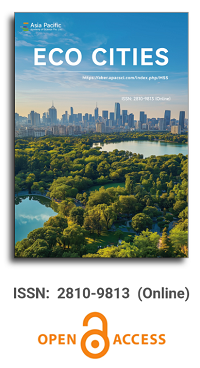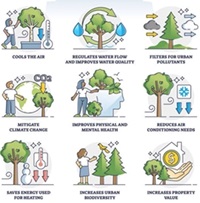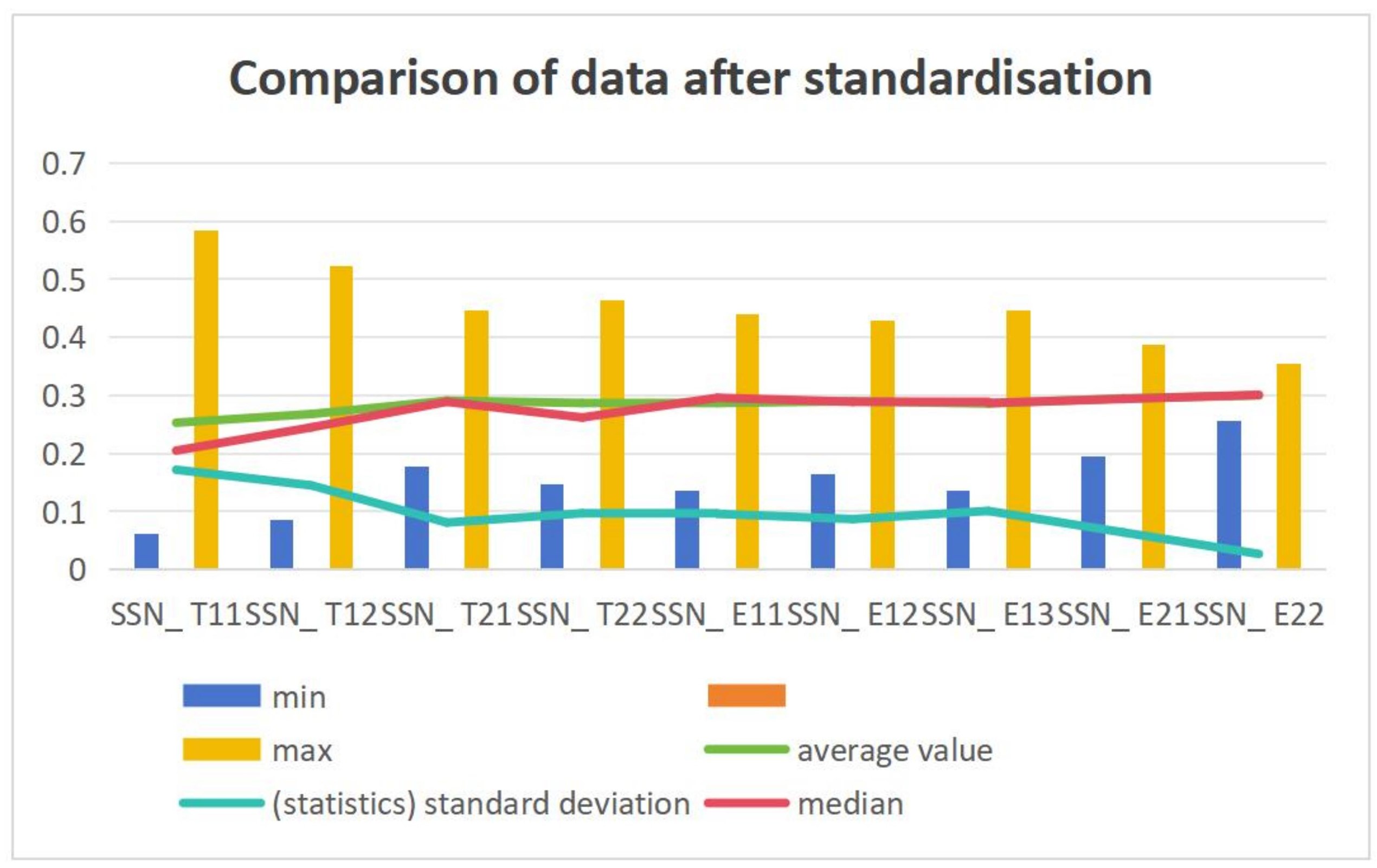


Engineering and geological environment of urban areas: Experience from Kharkiv, Ukraine (1960–2020)
Vol 6, Issue 1, 2025
Download PDF
Abstract
The article presents the results of the generalization and analysis of the development of engineering-geological and hydrogeological environments in the territory of a large city, Kharkiv, Ukraine, from the 1960s to the present day. The study is based on the authors’ many years of experience performing engineering surveys for construction in many cities of the former USSR, primarily Ukraine. Engineering-geological processes and phenomena with adverse consequences for buildings, structures, and populations that occur in urban areas as a result of insufficiently thought-out organizational, design, and construction solutions are listed. The process of flooding of urban areas by groundwater (FGW) is chosen as an example, which is a trigger for many negative and dangerous processes and phenomena, changes in the properties of soils and the geological environment. The main concepts associated with flooding, FGW indicators, causes and factors of its occurrence and development are given. The characteristics of FGW features for the conditions of the city of Kharkiv are given, and the most significant above-ground, near-surface and underground factors of flooding are highlighted. Some examples of construction and organizational solutions in the territory of Kharkiv are given. The article discusses approaches to combating flooding by installing protective structures, primarily drainage of various types, i.e., creating gray infrastructure. Much more promising is the installation of blue-green infrastructure (BGI), references are given to examples of its implementation, as well as other solutions based on nature. The creation of BGI is crucial for the harmonious coexistence of natural and anthropogenic landscapes, water management, and reducing the impact on the surface and underground hydrosphere.
Keywords
References
- Mackay BR, Shaker RR. A Megacities Review: Comparing Indicator-Based Evaluations of Sustainable Development and Urban Resilience. Sustainability. 2024; 16(18): 8076. doi: 10.3390/su16188076
- Buzási A, Csizovszky A. Urban sustainability and resilience: What the literature tells us about “lock-ins”?. Ambio. 2022; 52(3): 616-630. doi: 10.1007/s13280-022-01817-w
- Tzampoglou P, Ilia I, Karalis K, et al. Selected Worldwide Cases of Land Subsidence Due to Groundwater Withdrawal. Water. 2023; 15(6): 1094. doi: 10.3390/w15061094
- Azadgar A, Gańcza A, Asl SR, et al. Optimizing nature-based solutions for urban flood risk mitigation: A multi-objective genetic algorithm approach in Gdańsk, Poland. Science of The Total Environment. 2025; 963: 178303. doi: 10.1016/j.scitotenv.2024.178303
- Hale SE, von der Tann L, Rebelo AJ, et al. Evaluating Nature-Based Solutions for Water Management in Peri-Urban Areas. Water. 2023; 15(5): 893. doi: 10.3390/w15050893
- Shah MAR, Xu J, Carisi F, et al. Quantifying the effects of nature-based solutions in reducing risks from hydrometeorological hazards: Examples from Europe. International Journal of Disaster Risk Reduction. 2023; 93: 103771. doi: 10.1016/j.ijdrr.2023.103771
- Kaposztasova D, Cakyova L, Vertal M, et al. Active Green Constructions and Their Impact on Gray Infrastructure. Buildings. 2024; 14: 306. doi: 10.3390/buildings14020306
- Wu X, Zhang Y, Li X. Exploring the Relationship between Urbanization and Eco-Environment Using Dynamic Coupling Coordination Degree Model: Case Study of Beijing-Tianjin-Hebei Urban Agglomeration, China. Land. 2024; 13: 850. doi: 10.3390/land13060850
- Iegupov V, Strizhelchik G, Kupreychyk A, et al. Geological Hazards During Construction and Operation of Shallow Subway Stations and Tunnels by the Example of the Kharkiv Metro (1968–2018). International journal of georesources and environment. 2018; 4(4): 187-200. doi: 10.15273/ijge.2018.04.030
- Iegupov V, Strizhelchik G. Sustainability Resource of the Hydrogeosphere to Anthropogenic Impacts with Urbanization. Advances in Geoethics and Groundwater Management: Theory and Practice for a Sustainable Development. Springer; 2021. doi: 10.1007/978-3-030-59320-9_54
- Iegupov V, Strizhelchik G. Sustainability Resource of Natural and Technogenic Systems to External Influences. Medicon Engineering Themes; 2022.
- Iegupov V, Strizhelchik G, Goodary R. Sustainable Development of the Engineering Geological Environment of Urban Areas: Transition from Theory to Practical Solutions. In: Proceedings of the 8th World Congress on Civil, Structural, and Environmental Engineering; 2023. doi: 10.11159/icgre23.151
- Iegupov V, Strizhelchik G, Kichaeva O. Methodology for Assessing Sustainability Resource of Ecological and Geotechnical Systems of Urbanized and Industrial Territories. ISSMGE; 2022. doi: 10.53243/ICEG2023-266
- Iegupov V, Strizhelchik G, Goodary R. Engineering surveys for construction based on the concept of sustainability resource to external influences and nature-based solutions. In: Proceedings of the 7th International Conference on Geotechnical and Geophysical Site Characterization; 2024. doi: 10.23967/isc.2024.014
- Ministry of Regional Development and Construction of Ukraine. Protection from dangerous geological processes, harmful operational influences, from fire. Available online: https://e-construction.gov.ua/files/new_doc/3074285114079840009/2023-04-05/e2beea19-5bc1-4ed2-959e-c14f1ffada9b.pdf (accessed on 20 January 2025).
- Strizhelchik G. Problems of engineering geology of cities and possible ways to solve them (Russian). Engineering geology; 1987.
- Allocca V, Castellucci L, Coda S, et al. Integrating hydrogeological and economic analyses of groundwater flooding in an urban aquifer: the plain of Naples (Italy) as a case study. International Journal of Environmental Studies. 2023; 80(5): 1400-1416. doi: 10.1080/00207233.2023.2180197
- Mirlas V, Zhakyp A, Auelkhan Y, et al. Assessment of urbanization‐related groundwater flooding process via Visual MODFLOW modeling: A case study for the northern part of Almaty city, Kazakhstan. Journal of Flood Risk Management. 2024; 18(1). doi: 10.1111/jfr3.13029
- Donkor C, Marone A, Aprea A. Unveiling Milan’s Navigli and Underground Water Heritage through Integrated Urban (Water) Design. Blue Papers. 2024; 3(1): 178-89. doi: 10.58981/bluepapers.2024.1.14
- Chebanov O, Konoplia I. Groundwater flooding risk in the cities of Ukraine: assessment and management. In: Proceedings of the International Association of Hydrological Sciences; 2015. doi: 10.5194/piahs-366-151-2015
- Radu G, Chevereșan MI, Perju S, et al. Integrating Nature-Based Solutions for Increased Resilience to Urban Flooding in the Climate Change Context. Hydrology. 2025; 12(1): 16. doi: 10.3390/hydrology12010016
- Dugstad A, Ben Hammou H, Navrud S. Valuing the benefits of climate adaptation measures to reduce urban flooding: Community preferences for nature-based solutions. Water Resources and Economics. 2025; 49: 100257. doi: 10.1016/j.wre.2025.100257
- Sáenz de Tejada C, Daher C, Hidalgo L, et al. Urban planning, design and management approaches to building urban resilience: a rapid review of the evidence. Cities & Health. 2024; 8(5): 932-955. doi: 10.1080/23748834.2024.2364491
- Cousins JJ. Just nature-based solutions and the pursuit of climate resilient urban development. Landscape and Urban Planning. 2024; 247: 105054. doi: 10.1016/j.landurbplan.2024.105054
- Singh Y, Banerjee S, Sagar D. Integrated blue green infrastructure approach for storm water management. EPRA International Journal of Climate and Resource Economic Review. 2023; 11(2): 1-5. doi: 10.36713/epra13053
- Sudmeier-Rieux K, Galvin S, Nehren UM, et al. Editorial: Special issue: Nature-based solutions for reducing disaster risk. What is the evidence?. Nature-Based Solutions. 2025; 7: 100207. doi: 10.1016/j.nbsj.2024.100207
- Kibii C, Guerra F, Bananayo PB, et al. Nature-based solutions for climate change adaptation and resilience in urban informal settlements: Insights from kibera, kenya and Villa 20, Argentina. Nature-Based Solutions. 2025; 7: 100216. doi: 10.1016/j.nbsj.2025.100216
- Honghong Z, Yang Y. Accelerate the creation of the soft power of eco-cities (Chinese). Available online: https://www.gov.cn/xinwen/2018-12/27/content_5352587.htm (accessed on 20 January 2025).
- Bauermann BFC, Bussador A, B. Bauermann H, D. Matrakas M. Connecting the green to the digital: Integrating Eco Cities and Smart Regions. Eco Cities. 2024; 5(1): 2755. doi: 10.54517/ec.v5i1.2755
- Makvandi M, Li W, Li Y, et al. Advancing Urban Resilience Amid Rapid Urbanization: An Integrated Interdisciplinary Approach for Tomorrow’s Climate-Adaptive Smart Cities-A Case Study of Wuhan, China. Smart Cities. 2024; 7(4): 2110-2130. doi: 10.3390/smartcities7040084
Supporting Agencies
Copyright (c) 2025 Author(s)
License URL: https://creativecommons.org/licenses/by/4.0/

This site is licensed under a Creative Commons Attribution 4.0 International License (CC BY 4.0).

Chinese Academy of Sciences, China
Indexing & Archiving
Asia Pacific Academy of Science Pte. Ltd. (APACSCI) specializes in international journal publishing. APACSCI adopts the open access publishing model and provides an important communication bridge for academic groups whose interest fields include engineering, technology, medicine, computer, mathematics, agriculture and forestry, and environment.



.jpg)

.jpg)



